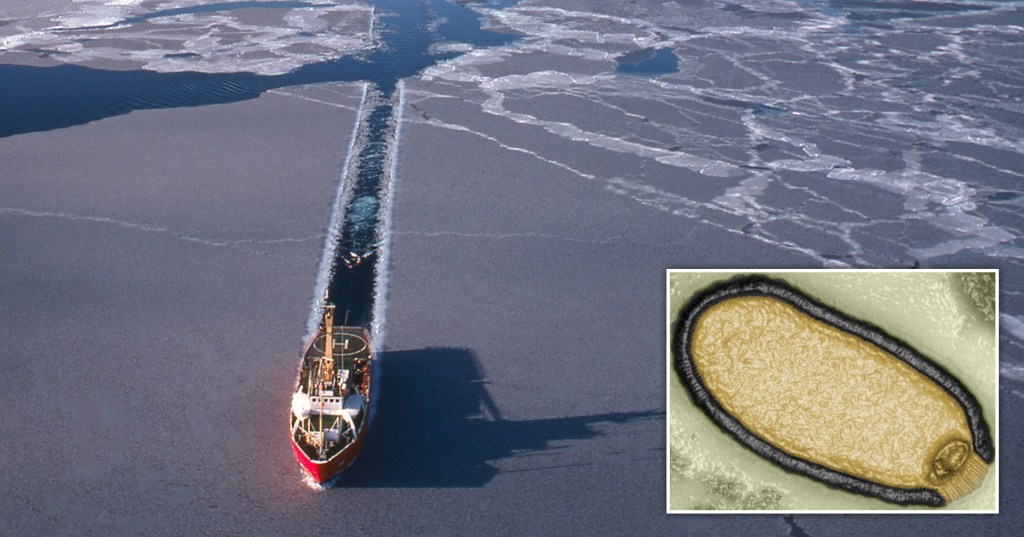The zombie viruses could wreak havoc if they are defrosted (Picture: Getty)
Scientists have warned that ancient deadly viruses unleashed by increased shipping defrosting the Arctic could pose a terrifying new threat to humanity.
As the earth’s climate warms and ships continue to use routes through thick ice, Methuselah microbes – also known as zombie viruses – could re-emerge.
An ‘Arctic monitoring network’, which will detect early cases of disease from the long-dormant viruses and bugs, is in the process of being set up, the Observer reported.
Geneticist Jean-Michel Claverie of Aix-Marseille University told the newspaper: ‘Little attention has been given to an outbreak that might emerge in the far north and then travel south – and that is an oversight, I believe.
‘There are viruses up there that have the potential to infect humans and start a new disease outbreak.’
The viruses lie deep in permafrost in the northern hemisphere, with some of them dating back to 48,000 years ago.
Claverie added: ‘The crucial point about permafrost is that it is cold, dark and lacks oxygen, which is perfect for preserving biological material. You could put a yoghurt in permafrost and it might still be edible 50,000 years later.
‘The danger comes from another global warming impact: the disappearance of Arctic sea ice. That is allowing increases in shipping, traffic and industrial development in Siberia. Huge mining operations are being planned, and are going to drive vast holes into the deep permafrost to extract oil and ores.
‘Those operations will release vast amounts of pathogens that still thrive there. Miners will walk in and breath the viruses. The effects could be calamitous.’
Last year, a study from journal PLoS Computational Biology revealed that climate change could hasten the release of ‘time-travelling’ pathogens from melting permafrost and ice that have been trapped for millennia.
The study, led by Dr Giovanni Strona of the European Commission Joint Research Centre and Professor Corey Bradshaw of Flinders University in Australia, used computer simulations to model the impact of ancient pathogens on bacterial communities.
The researchers constructed simulated experiments where digital pathogens from the past invade communities of bacteria-like hosts. They compared the effects of the invading pathogens on the diversity of host bacteria to those in communities where no invasions occurred.
They found that in their simulations, the ancient invading pathogens could often survive and evolve in the modern world, and about 3% became dominant in their new environment.
Professor Corey Bradshaw said: ‘As a society, we need to understand the potential risk posed by these ancient microbes so we can prepare for any unintended consequences of their release into the modern world.
‘The results tell us that the risk is no longer simply a fantasy that we shouldn’t be prepared to defend against.’


